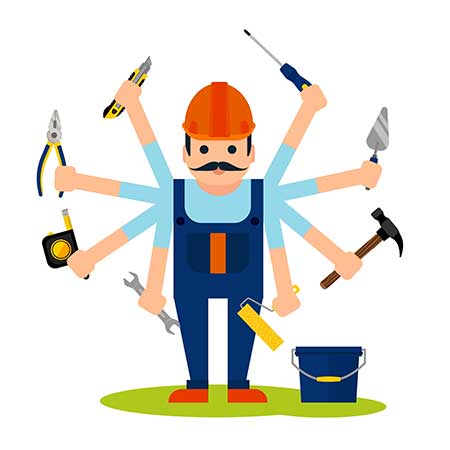Introduction
Maintenance fitters are crucial in guaranteeing the seamless functioning of industrial equipment and systems in the ever-evolving realm of construction and infrastructure. With the United Kingdom’s ongoing commitment to infrastructure endeavors such as Hinkley Point C and HS2, there exists a wealth of possibilities for those keen on embarking on a journey as a maintenance fitter. This extensive handbook will examine the route to becoming a maintenance fitter, covering essential skill sets, potential income prospects, mandatory qualifications, working environments, and avenues for progressing in this career field.
Understanding the Role of a Maintenance Fitter
Maintenance fitters are the backbone of many industries and are responsible for various critical tasks. Their primary duties include erecting, installing, servicing, and repairing industrial machinery, electrical systems, mechanical equipment, and hydraulic systems. This multifaceted role encompasses a variety of settings, from bustling factories and industrial plants to expansive construction sites and busy transport depots.
On a typical workday, a maintenance fitter might engage in diverse activities. These could include installing pipework and pumps, conducting thorough inspections of machinery to identify and rectify faults, replacing worn-out components, and responding promptly to emergency breakdowns. Essentially, they are the problem solvers who keep the wheels of industry turning.
The Path to Becoming a Maintenance Fitter
If you’re intrigued by the prospect of a career as a maintenance fitter, you’re likely wondering about the journey ahead. To embark on this path successfully, it’s essential to grasp the key components of the profession, ranging from qualifications and skills to potential earnings and career progression.
- Salary Expectations
Your income as a maintenance fitter can fluctuate depending on factors such as the scale, complexity, and location of your current project and your specific employer. Though informative, these figures should be considered guidelines, as various factors can influence earnings. These include your geographic location, the sector you work in, and your proficiency in specialized areas of maintenance fitting.
- Required Skills
Maintenance fitters possess unique skills and qualities that enable them to excel in their roles. To embark on this career path, it’s crucial to hone and exhibit the following attributes:
- Attention to Detail: As a maintenance fitter, you must meticulously interpret and adhere to complex technical manuals and engineering plans. Precision is key when dealing with intricate systems and machinery.
- Practical Skills: Maintenance fitting is hands-on, necessitating strong hand-eye coordination and manual dexterity. You’ll often be required to manipulate and repair machinery and equipment.
- Physical Fitness: The job demands a good level of physical fitness. You should be capable of handling the physical aspects of the role, which might involve lifting and maneuvering heavy objects.
- Problem-Solving Aptitude: Expect to encounter challenges regularly. Your ability to identify and resolve issues efficiently is a cornerstone of success in this field.
- Working Under Pressure: Meeting deadlines and responding to emergencies is part and parcel of a maintenance fitter’s routine. The capacity to stay calm and collected under pressure is indispensable.
- Qualifications and Training
Now that you’ve gained insight into the skills required, let’s explore the qualifications and training necessary to kickstart your career as a maintenance fitter.
- Apprenticeships: Many individuals enter this profession through apprenticeship programs. These initiatives offer a unique blend of on-the-job training and academic learning. You’ll earn while you learn, gaining practical experience in real-world scenarios. Apprenticeships are an excellent route to consider, offering valuable insights into the profession.
- Minimum Entry Requirements: To secure a place in an apprenticeship scheme, you typically need a minimum of four GCSEs at grade C or above, including Mathematics, English, and Science. These foundational subjects are crucial for comprehending the technical aspects of maintenance fitting.
- NVQs (National Vocational Qualifications): Several NVQs align with the maintenance fitting profession. These qualifications offer a structured curriculum and assessment process. A few relevant options include:
- Level 3 (NVQ) Diploma in Engineering Maintenance.
- Level 3 Combined Diploma in Process Engineering Maintenance.
- City & Guilds Courses: Completing the City & Guilds Engineering Maintenance course (1788) is another route to consider. This respected qualification can enhance your skills and employability.
- Construction Skills Certification Scheme (CSCS): If your aspirations lead you to construction sites, obtaining a Construction Skills Certification Scheme (CSCS) competency card is essential. This card signifies your competence and suitability for construction-related roles.
- Working Hours and Conditions
Before embarking on this career, it’s crucial to understand the working conditions and hours you can expect as a maintenance fitter:
- Standard Working Hours: Maintenance fitters typically work between 37 and 40 hours a week, Monday to Friday. However, it’s important to note that flexibility is often required due to the dynamic nature of projects.
- Shift Work and Overtime: Maintenance fitters must adapt to shift work and be prepared for overtime, including evenings and weekends. These additional hours present opportunities to enhance your earnings.
- On-Call Duties: Being on-call for emergencies is a common aspect of the job. You should be prepared to respond promptly to urgent maintenance requirements, even outside regular working hours.
- Varied Work Locations: The nature of maintenance fitting can take you to diverse settings, ranging from industrial plants and factories to construction sites. This diversity offers a dynamic work experience but may also entail travel and periods away from home.
- Safety Gear: Given the potential hazards associated with the profession, wearing protective clothing is imperative. Safety boots, goggles, hard hats, and hi-vis clothing are indispensable for ensuring safety and compliance with workplace regulations.
- Career Advancement and Specialization
Maintenance fitting offers a promising career path with ample progression opportunities:
- Engineering Technician: As you accumulate experience and expertise, you can advance to the role of an engineering technician. This position typically involves supervisory responsibilities and a deeper involvement in complex maintenance projects.
- Site Supervisor or Manager: Further advancement can lead to supervisor or manager roles. In these positions, you’ll oversee maintenance teams and take on greater leadership responsibilities.
- Areas of Specialization
As you progress in your maintenance fitting career, consider exploring areas of specialization. You can delve into mechanical, electrical, or systems engineering with additional training and qualifications. Specializing in these fields can open doors to more specialized roles and potentially higher earning potential. Get in touch with us today through our Contact Us page and let’s connect!
Enhancing your living space has never been easier with FloorPup! Explore our wide selection of hardwood flooring, get expert floor care and maintenance tips. Our professional floor fitters, skilled driveway pavers, and reliable carpet repair services ensure top-quality results. Learn more about our commitment to quality on our about us page. Visit FloorPup and transform your home today!
FAQS
What is the highest-paid fitter?
The highest-paid fitters typically specialize in the oil and gas industry, particularly as pipefitters or riggers. These professionals install and maintain complex piping systems and heavy equipment on offshore drilling rigs. Their specialized skills, demanding work, and often hazardous working conditions can lead to significantly higher salaries than fitters in other industries. Additionally, fitters with advanced certifications, extensive experience, and a strong safety record tend to command higher wages in all industry sectors.
Is fitter a good trade?
Is being a fitter a worthwhile trade? Absolutely! Fitting is a valuable and rewarding trade with strong prospects. It offers steady employment opportunities across industries, excellent job security, and a chance to work on diverse mechanical systems. Fitters often enjoy competitive salaries and the satisfaction of contributing to the functionality and safety of machinery. Moreover, as technology advances, the demand for skilled fitters remains consistently high, making it a promising career choice.
What is fitter scope?
A fitter’s work encompasses various tasks related to assembling, installing, and maintaining mechanical and structural components. Fitters are crucial in plumbing, construction, manufacturing, and automotive industries and are responsible for precise measurements, cutting, shaping, and fitting materials. Their expertise ensures that machinery, pipes, structures, or systems operate efficiently and safely. Their scope extends to various applications, contributing to the seamless functionality and safety of the systems they work on across diverse industries.
Can anyone become a fitter?
Certainly, anyone with the right attitude and willingness to learn can become a fitter. While formal training through apprenticeships or technical programs is common, some individuals acquire the necessary skills through on-the-job experience. The key attributes for success as a fitter include a strong attention to detail, manual talent, and the ability to work with precision. Additionally, a good understanding of technical drawings and a willingness to continuously update one’s knowledge are essential. With dedication and the right training, virtually anyone can pursue a career as a fitter.


